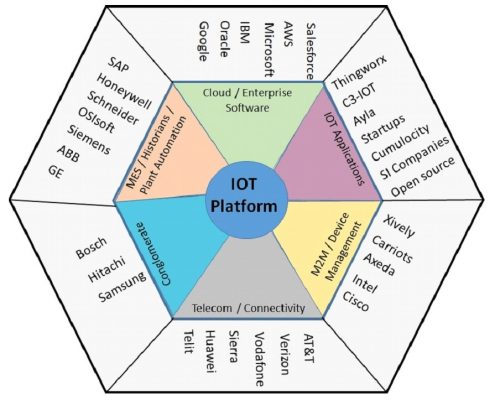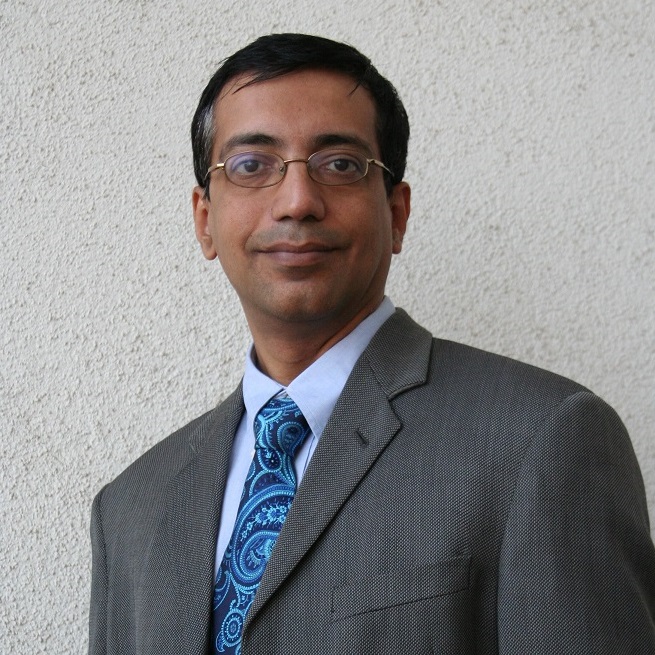Race for the IoT Platform
With the IoT market poised to explode in the coming years and generate billions of dollars in revenue, there is a ferocious race in terms of establishing a stronghold in the IoT Platform market. This series of blogs will delve into various aspects of IoT Platforms. In this first blog, we will look at the different approaches various companies are adopting to arrive at their IoT Platform proposition. In subsequent blogs, we will explore various elements of IoT platform, how to choose an IoT platform and other aspects about it.
IoT projects are extremely complex in nature. There are multiple layers in the entire technology stack. As the name suggests, it starts with the things. Things or assets are business-critical objects which could be physical, tangible objects, such as vehicles, places, facilities, people, animals, or even abstract entities. Often, people are misled to believe that devices and sensors are the things. Real things are those, in which you have a business interest and you are intending to measure, monitor or manage those. The internet of things essentially connects these ‘important’ things to other things and/or systems.

The first technological layer adds sensory elements to these things. The next layer connects these things using various type of communication solutions. The systems, either deployed on-premise or on cloud, consists of one or more platforms, and are capable of acquiring data from a large number of sources at a very high frequency. They have the ability to store big data, process it, contextualize it, create actionable insights from it, and in many cases take those actions as well. As you can imagine, this core system is supported by a large number of peripheral technologies like augmented reality, wearables, drones, external systems, enterprise systems and so on. IoT platforms form the backbone of such complex IoT solutions. The ability to develop multiple solutions in a robust manner and get early to the market can be feasible only with a robust IoT platform.
There are more than 300 IoT platforms in the market today. If you include middleware products in this list, the number would be even higher. As you can imagine, multiple software vendors and companies are trying to offer their own IoT platforms. These companies are taking different paths to reach the end goal of a comprehensive IoT platform offering. At this point of time, these platforms look different from each other in terms of features and functionality. And the reasons for this are their starting point, their sweet spots, their prior experiences and their core competencies.

The idea behind this diagram is neither to categorize the platforms, nor to classify the companies. The company names are used for illustrative purpose only. There are several companies going across the sections, and there are several platforms with overlapping functionalities. The list of the vendors is not exhaustive either. The purpose of the diagram is to appreciate the diversity of the companies and their possible approach towards the development of their platform. The strengths and weaknesses of the platforms, and thus, suitability of the platform for different use cases can get influenced because of this.
In the first approach, for the industrial scenario, manufacturing plants have always been collecting, analyzing and visualizing the operational data, inferring the need for alarms and running analytics outputs for a long time. There are a bunch of companies who have products in this category. With IoT wave however, new possibilities have opened up in going beyond a single line or a single plant to geographically distributed plants monitoring, insight creation and optimization across such segments, such as a class of assets, operating data for a class of assets over time, and complex correlations across various asset class and master data segments. The ability to handle and analyze a large amount of data has provided multitudes of possibilities, and the emergence of machine learning and AI has provided more opportunities to bring profound insights. These companies have started the journey in that direction by either extending the existing functionality or revamping their platforms completely. Strong domain knowledge about the industry, use cases, vast experience in handling industrial data and deep understanding of the intricacies of asset hierarchies should help these companies offer strong solutions/offering in the industrial IoT space.
With the convergence of OT and IT, it was obvious that strong enterprises, who have already conquered the wave of cloud and have strong cloud offerings, will also develop an IoT offering to complement the existing set of enterprise applications and cloud infrastructure. IoT solutions would be the ultimate enterprise applications, and would be consumed by all enterprise users from the shop-floor to the top-floor. These companies have a benefit in that they have a good understanding of the various personas, and the user experience needed for them. They also understand software architecture very well to offer an extremely robust, scalable, reliable, secure system for any IoT solution. This is the second approach of approaching the IoT platform offering.
The third approach is to develop the platform from the application point of view. The main challenges to be addressed are on how to enable customers to solve their problems quickly, bring solutions to market in a short amount of time and provide user-friendly applications, along with peripheral tools. SI companies and startups also take a similar approach and address one or more verticals for solution creation. SI divisions of the large conglomerate also take a similar approach, but they also have immense internal knowledge about various verticals to make the offering compelling. Being a conglomerate, their approach is to solve the problems in their sister companies first, hence this approach is identified as the fourth approach.
Device management is the core of any IoT solution. Ability to connect to a device, authenticate it, acquire data, monitor the status, login and troubleshoot remotely, push contents or updates over the air, are some of the key features of device management tools. Many IoT platforms have evolved from this core strength by augmenting additional functionality like analytics, application development and so on. This is the fifth approach to reach to the IoT platform.
Any of these functions will not be possible unless there is reliable connectivity. Telecom companies and networking companies provide this critical technology as part of the entire stack. When assets or things are remote, when they are constantly mobile, when the number of things to be connected is extremely large, when the environment is hazardous, when things are inaccessible, connectivity technologies become even more critical. In the sixth approach, these organizations have evolved their connectivity management platforms into IT platforms by providing additional functionalities.
Apart from these, many customers have chosen to develop platforms on their own sometimes leveraging off-the-shelf technology components. Once successful, we can expect them to make their platforms available to the rest of the world to monetize their initial investment.
So, where is this all going? It appears that the technology itself is getting commoditized. The platforms will be continuously improved no matter what direction they come from, and will eventually provide solid overall functionality. The market is likely to stay fragmented in terms of IoT platforms for a foreseeable future. We will see several combinations of frenemies where two or more platform vendors would choose to collaborate and stick to their individual competencies in the final solution. Standardization seems like a remote possibility at this point. Pricing strategies will be very dynamic, innovative and fluctuating. The end customer will continue to be confused about the correctness of the choice of a platform, and is most likely to rely on other stakeholders in the ecosystem like consulting companies and system integrators to make decisions for them.
Different approaches have led to different positioning of IoT platforms from various vendors leading to this situation. In the next blog, we will look into what exactly is involved in any IoT platform and different elements of it. We will then look into the decision making criteria that should help customers in adopting the IoT platform for their digital transformation.
More from Sameer Joshi
Trillion dollar economy… Internet of Things (IoT) and supporting digital technologies like…
Latest Blogs
The energy and anticipation were evident even before entering the arena, and attendees had…
A tectonic shift in wealth is underway, and agility is the key factor that will distinguish…
Educational institutions are at a crossroads where their future hinges on a single question:…
In times of market unpredictability, alternative investments offer a valuable advantage by…




